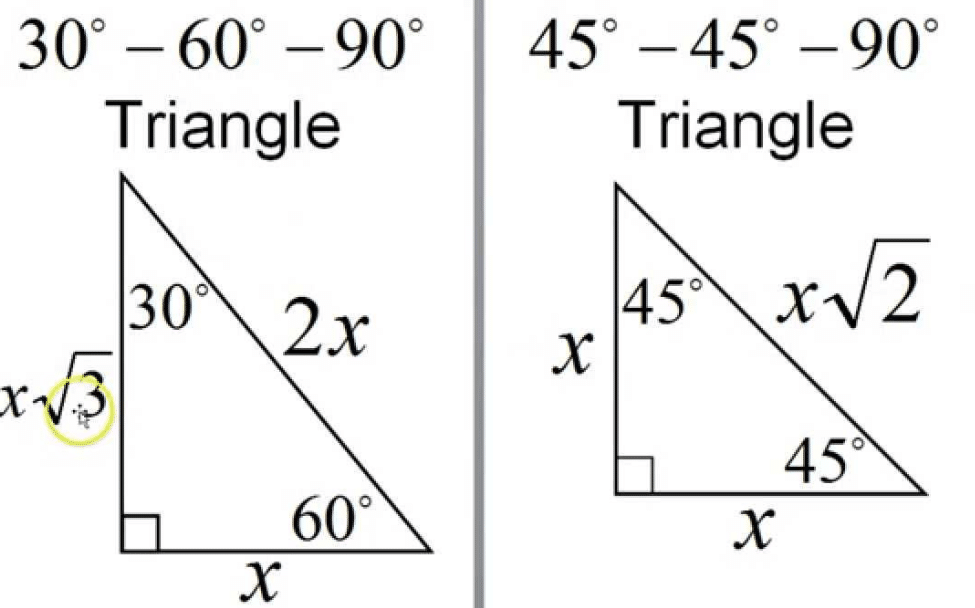


We can just set up an equation using our ratio. What are the other two sides? Let's start with the short side, which is x. If so, great! If not, we just need to do the math. Sometimes, we'll see 5 root 3 as an answer choice. What about the long leg? That's going to be 5 times the square root of 3. So, whatever we have for the short leg, the hypotenuse is just 2 times that. What is the hypotenuse? We know that if the short leg is 1, the hypotenuse is 2. Here's a 30-60-90 triangle where the short leg is 5: Okay, it's not really going to play tennis or anything, but remembering the ratio can make these problems a breeze. Let's see the 30-60-90 triangle in action. So, that's like four ways to remember the 1:2:sqrt 3 rule. Or, if you know two sides, the Pythagorean Theorem. Of course, you could also use your trigonometry wizardry. So, now what would our short leg be? It's half of the bottom side, so it'd be 1. So, in this triangle, if one side is 2, then all sides are 2. It's an equilateral triangle, with three equal angles and three equal sides. So, now we have these two 60-degree angles on the bottom, and the 30-degree angle joins its reflected 30-degree angle to become another 60-degree angle. This triangle is so pretty, let's imagine it looks at itself in the mirror: Finally, the hypotenuse is the longest, and it's opposite the largest angle, so that's your 2. And the long leg is opposite the 60-degree angle, which makes it the middle one, so that's your square root of 3. The short leg is the shortest side, so that's your 1. So, how do you remember which is which? Just think about the logical relative length of the sides. If the hypotenuse is 2, the short leg is 1, and the long leg is the square root of 3. So, what is special? The ratio of the side lengths. Not too special, but pretty easy to remember. The one opposite the 60-degree angle? That's the long leg. We call the side opposite the 30-degree angle the short leg. You know that the side opposite the right angle is the hypotenuse. I know it sounds like a cell phone plan, but 30-60-90 refers to the triangle's angles. The first special right triangle is the 30-60-90 triangle. In this lesson, we're going to focus on two right triangle equivalents of tennis royalty. These aren't your regional tennis champions. A right triangle probably has a wicked serve.Īnd then there are special right triangles. That's like the difference between a right triangle and an oblique triangle. That would make you a special tennis player, certainly better than most people at the game. You might be the star of your high school's varsity team. For example, maybe you're a great tennis player. In this lesson, we'll look at two special right triangles (30-60-90 and 45-45-90) that have unique properties to help you quickly and easily solve certain triangle problems. This lesson video Not available at this time available video coming soon Special Right Triangles: Types and Properties


 0 kommentar(er)
0 kommentar(er)
